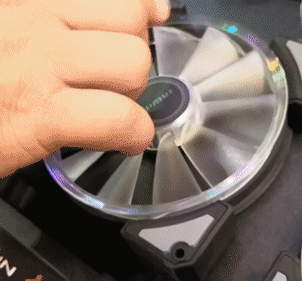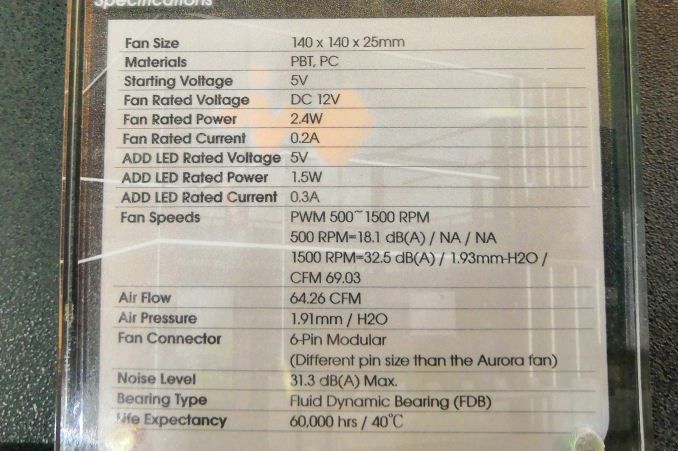The InWin Crown Fan: Why Bother with Closer Fan Blades When the Whole Fan Moves
by Ian Cutress on June 19, 2018 1:00 PM EST
In recent weeks and months, a lot of noise has been made about Noctua’s new fan design that uses precise tooling to create fan blades that are much closer to the edge of the fan than has been used previously. The benefits of such a design are often listed as a better and more powerful airflow. Well perhaps InWin just one-upped Noctua’s design, by fixing the blades to the fan sub-frame and spinning the sub-frame instead
This new fan design uses two main frame platforms: the first, which is fixed to the chassis in the corners, is used as a housing around the outside of the internal subframe as well as carrying the cables into the motor. The second is the subframe, which contains the fan blades fixed from the center to the sub-frame. The end result is that almost the whole fan spins around.
There are pros and cons to this method, including the fan blades getting more air and having more of the sub-frame move can assist with shifting air. The downside is that there is more mass, so the total RPM of the fan (at equal torque) is likely to be lower.
InWin rates these fans at 2.4W, with an average airflow of 64.26 cubic feet per minute, and an average air pressure of 1.91 mmH2O, with a noise level of 31.3 dB(A). The motor is a fluid dynamic bearing and rated for 60,000 hours use. At retail a twin pack of 140mm fans should come in under $60, and 120mm fans are available also.
| Want to keep up to date with all of our Computex 2018 Coverage? | ||||||
 Laptops |
 Hardware |
 Chips |
||||
| Follow AnandTech's breaking news here! | ||||||














35 Comments
View All Comments
mode_13h - Wednesday, June 20, 2018 - link
I wonder if the circumferential part could warp over time, or as a function of heat and humidity. That might create stresses that introduce nonuniformities in the orientation of the blades, which could manifest as vibration and/or noise issues.Gigaplex - Wednesday, June 20, 2018 - link
"The downside is that there is more mass, so the total RPM of the fan (at equal torque) is likely to be lower."Mass affects acceleration, not speed. What was the basis of this claim?
Spunjji - Wednesday, June 20, 2018 - link
It's incorrect as stated, but the additional load on the bearings and the extra aerodynamic drag would most likely produce the same result of a lower top speed.BurntMyBacon - Wednesday, June 20, 2018 - link
I'm going to estimate drag as the power required to drive the fan. Here are a few data points from the datasheets that corroborate (or at least don't dispute) your statement.NB eLoop B12-1 - 800RPM - 0.33W
NF-S12A ULN - 800RPM - 0.72W
NF-A12x25 ULN - 1200RPM - 0.6W
NB eLoop B12-2 - 1300RPM - 0.85W
NF-S12A FLX -1200RPM - 1.44W
NF-A12x25 PWM - 2000RPM - 1.68W
NB eLoop B12-P - 2000RPM - 1.92W
NF-F12 industrialPPC-3000 PWM - 3000RPM - 3.6W
NB eLoop B12-4 - 2400RPM - 3.84W
According to the datasheets the closed ring technology, represented by the eLoop fans, actually uses less power than a high quality standard fan at the lowest RPM. Though, it immediately looses its advantage at the next speed step and the disparity continues to grow until a 2400RPM closed ring fan uses more power than a 3000RPM Noctua fan. The second point of interest is that Noctua's NF-S series fans seem to be far less power efficient than their other series and even the eLoops at each RPM present. This suggests that their are larger concerns than closed ring vs open that Noctua had to address to get such low power to begin with.
zodiacfml - Wednesday, June 20, 2018 - link
Meh. Give me MSI's gaming GPU fan in a 120mm fan config.